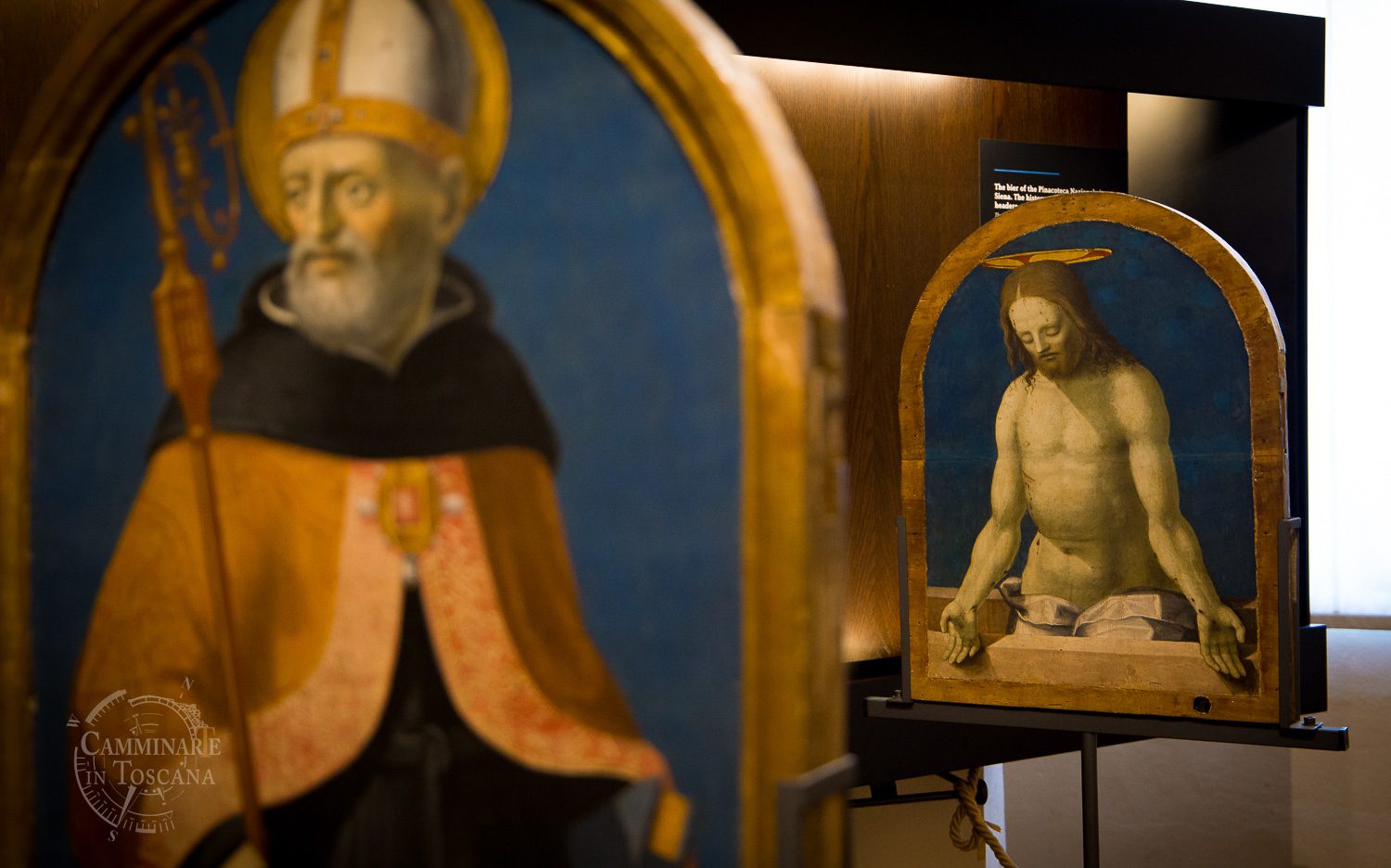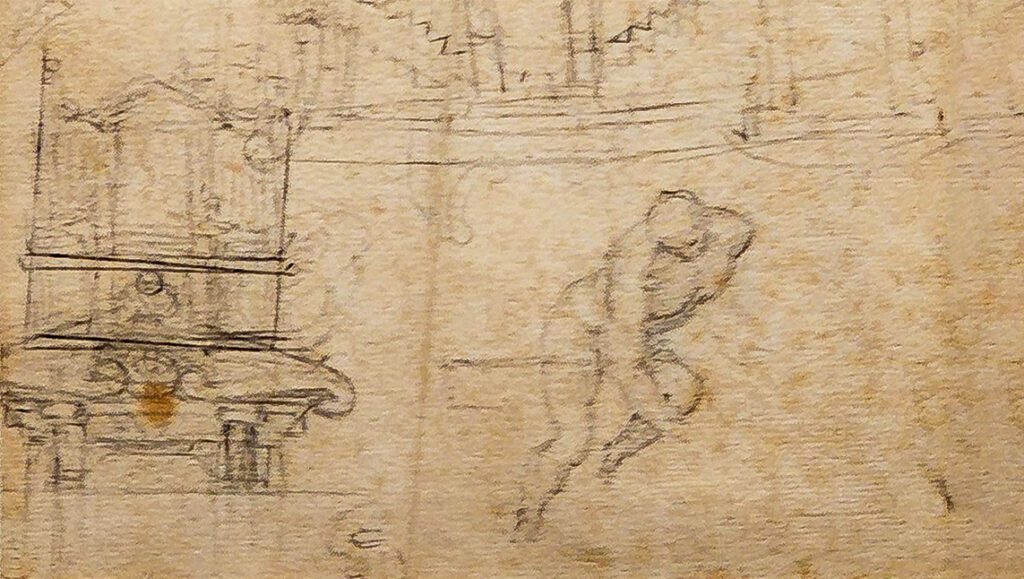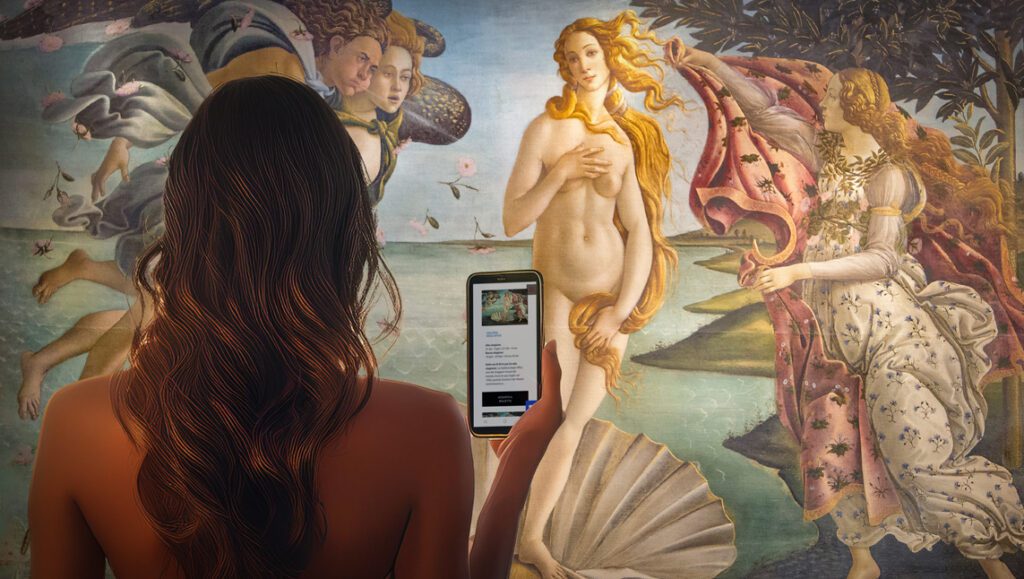
In 2017 the “Good century of Sienese art” exhibition
The exhibition entitled “The good century of Sienese art” ended on 30 September 2017, had been an exhibition involving various exhibition venues in the Province of Siena: in Montepulciano it is housed in the Cruciani Pinacoteca Civic Museum, in Pienza in the San Carlo Borromeo Conservatory, while in San Quirico d’Orcia it is set up in the historic halls of Palazzo Chigi.
The exhibition, which sees the participation of important scholars of the historical-artistic field such as Alessandro Angelini, Roberto Longi, Laura Martini and Gabriele Fattorini in the care of the catalogue, undoubtedly represents one of the most important events in the Sienese cultural panorama of recent years, this both for the quality of the works on display – some of which were even borrowed from foreign museums – and for the theme addressed, whose focus is to provide an orderly chronological picture of what the abbot Luigi Lanzi defined as “the good century of painting Sienese” – a happy definition that gave the exhibition its name.
Ranging from Beccafumi to Rutilio Manetti
The itinerary starts from the early works of Domenico Beccafumi, called to Montepulciano in 1507 to create an image of the Dominican Blessed Agnese Segni. The first chronological stop of the exhibition is the Poliziano museum, where the painting of the Dominican blessed other works by “Mecherino” are juxtaposed which well illustrate the beginnings in Siena in the early sixteenth century, those of the brief lordship of Pandolfo Petrucci and the activity of Pintoricchio – active in the Libreria Piccolomini – soon eclipsed by the novelties of Leonardo and Raphael.
The rooms of Palazzo Chigi in San Quirico d’Orcia present the works created by artists such as Giovanni Antonio Bazzi known as il Sodoma and his son-in-law, Bartolomeo Neroni known as il Riccio, years which as chronological cornerstones are the sack of Rome in 1527 and the end of the Sienese Republic, in 1559.
The chronological itinerary ends with the Pienza exhibition section, where the activity of some Caravaggesque artists active in Tuscany in the seventeenth century is documented in the Conservatory of San Carlo Borromeo, such as Francesco Rustici known as il Rustichino, Rutilio Manetti or Orazio Gentileschi, painters intent on “investigating of the physical consistency of things. In the seventeenth century there was no shortage of lingering mannerists, such as the Waldensian painter Alessandro Casolani, who was sometimes engaged in private commissions in which it was necessary to satisfy the tastes of the patrons, still tied to the previous tradition.
Anyone passing through the Val d’Orcia this weekend cannot therefore miss the last opportunity to see works of exceptional quality brought together, created by artists who, although in some cases worked in the shadow of the great masters of the mature Renaissance, they were important protagonists in that “good century of Sienese art” ⟢



